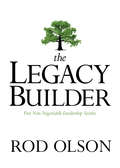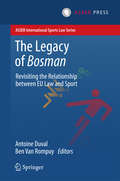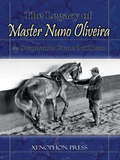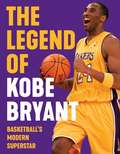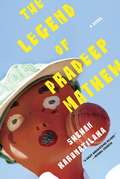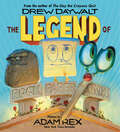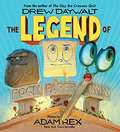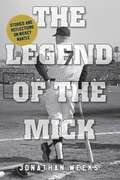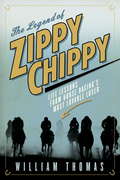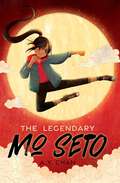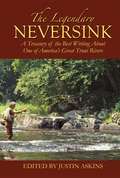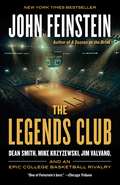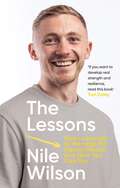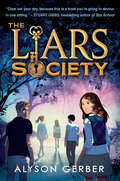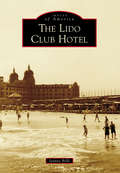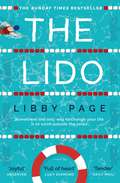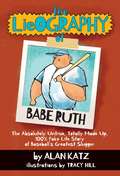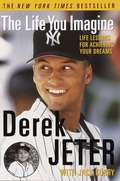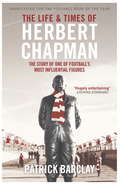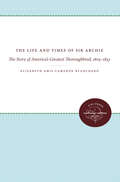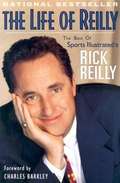- Table View
- List View
The Legacy Builder
by Rod Olson"You've forgotten the five foundational principles that work in sports, life, and leadership. The five non-negotiables. And you can't give away what you don't possess yourself." When Lance Marshall's life comes crashing down, his wife arranges for him to meet with his high school mentor, Coach Moore. Coach sends Lance "back to the locker room" to talk with five sports legends who are now successful leaders. Each player will show Lance a principle for excellence in both leadership and the home. But the advice comes with a caveat: Lance must apply the principle he learns within twenty-four hours or the meetings end. This modern parable is for business leaders, coaches, and parents who know the challenge of motivating people while balancing the demands of life with integrity--and leaving a legacy that will last forever.
The Legacy of Bosman
by Ben Van Rompuy Antoine DuvalIn December 1995, the Court of Justice of the European Union delivered its judgment in its most famous case to date: the Bosman case. Twenty years later, this book explores in detail how this landmark judgment legally and politically transformed the relationship between the European Union and sport. Written by leading academics in the field, the ten contributions in this book reflect on how Bosman fundamentally shaped the application of EU law to sport and its transformative effects on sports governance. The book's innovative perspectives on the Bosman ruling makes it important reading for scholars, practitioners and policy-makers concerned with EU law and Sports law. With a foreword by Prof. Dr. Carl Otto Lenz, Advocate General at the Court of Justice in the Bosman-case. Dr. Antoine Duval is Senior Researcher for International and European Sports Law at the T. M. C. Asser Instituut in The Hague. He holds a Ph. D. on the interaction between Lex Sportiva and EU Law from the European University Institute in Florence, where he was the conveyor of the Transnational Law Working Group. Prof. dr. Ben Van Rompuy is a senior researcher at the T. M. C. Asser Instituut, where he heads the ASSER International Sports Law Centre, and is Visiting Professor of Competition Policy at the Free University of Brussels (VUB). He holds a Ph. D. in law from the VUB and held visiting scholar positions at Georgetown University and New York University. The book appears in the ASSER International Sports Law Series, under the editorship of Prof. Dr. Ben Van Rompuy, Dr. Antoine Duval and Marco van der Harst LL. M.
The Legacy of Master Nuno Oliveira
by Stephanie Grant MillhamThis book represents a fascinating compilation of conversations, notes from Nuno Oliveira's lessons, biographical material and observations about his teachings, as well as a personal journey about what it was like to study under the Master despite a significant physical disability. Within these pages are pictures -- including some never before published -- that span the Master's career. Also included are tributes to the Master written by prominent international riders who studied under him. A chapter examining the influence of Baucherism on Oliveira's work includes important historical observations from noted French authors Michel Henriquet and Jean-Claude Racinet. "Nuno Oliveira occupies a unique place in equestrian history," explains the author "With his blending of the classical exercises of the Old Masters and his skilled interpretation of the innovations of François Baucher, he took equitation to new heights of lightness, suppleness, and brilliance. His legacy now spans three generations. No other Master in living memory has so captured the art and poetry, the heart and soul, of classical equitation." In the words of renowned author, Sylvia Loch: "Stephanie's book is a masterpiece." In this "beautiful and important book," Loch's introduction concludes, "Not only is there so much to share and learn, it is one of which the Mestre himself would be immensely proud."
The Legality of Boxing: A Punch Drunk Love? (Birkbeck Law Press)
by Jack AndersonThe first book of its kind dedicated to an assessment of the legality of boxing, The Legality of Boxing: A Punch Drunk Love? assesses the legal response to prize fighting and undertakes a current analysis of the status of boxing in both criminal legal theory and practice. In this book, Anderson exposes boxing’s 'exemption' from contemporary legal and social norms. Reviewing all aspects of boxing - historical, legal, moral, ethical, philosophical, medical, racial and regulatory - he concludes that the supposition that boxing has a (consensual) immunity from the ordinary law of violence, based primarily on its social utility as a recognised sport, is not as robust as is usually assumed. It: suggests that the sport is extremely vulnerable to prosecution and might in fact already be illegal under English criminal law outlines the physical and financial exploitation suffered by individual boxers both inside and outside the ring, suggesting that standard boxing contracts are coercive thus illegal and that boxers do not give adequate levels of informed consent to participate advocates a number of fundamental reforms, including possibly that the sport will have to consider banning blows to the head proposes the creation of a national boxing commission in the US and a similar entity in the United Kingdom, which together would attempt to restore the credibility of a sport long know as the red-light district of sports administration. An excellent book, it is a must read for all those studying sports law, popular culture and the law and jurisprudence.
The Legend of Kobe Bryant: Basketball's Modern Superstar
by Triumph BooksKobe Bryant will forever be known as one of basketball's greatest superstars. Nicknamed "The Black Mamba," the Los Angeles Lakers legend left his mark on the game as a fierce competitor who lifted those around him and never settled for anything less than the best. The Legend of Kobe Bryant contains essential facts and stories all basketball fans should know, plus inspiring quotes and brilliant photos. Learn about Kobe's early days bursting onto the NBA scene, his five NBA championships with the Lakers, his unforgettable 60-point final game, and his desire to share basketball with everyone.
The Legend of Pradeep Mathew: A Novel
by Shehan KarunatilakaWinner of the Commonwealth Book Prize* Winner of the $50,000 DSC Prize for South Asian Literature ** A Publishers Weekly "First Fiction" Pick for Spring 2012 *"A crazy ambidextrous delight. A drunk and totally unreliable narrator runs alongside the reader insisting him or her into the great fictional possibilities of cricket."--Michael OndaatjeAging sportswriter W.G. Karunasena's liver is shot. Years of drinking have seen to that. As his health fades, he embarks with his friend Ari on a madcap search for legendary cricket bowler Pradeep Mathew. En route they discover a mysterious six-fingered coach, a Tamil Tiger warlord, and startling truths about their beloved sport and country. A prizewinner in Sri Lanka, and a sensation in India and Britain, The Legend of Pradeep Mathew by Shehan Karunatilaka is a nimble and original debut that blends cricket and the history of modern Sri Lanka into a vivid and comedic swirl.
The Legend of Rock Paper Scissors
by Drew DaywaltNew York Times Bestseller! 5 Starred Reviews!"Will have listeners in stitches." —Kirkus Reviews (starred review)"Purely absurd, sidesplitting humor." —Booklist (starred review)"Demands bombastic, full-volume performances." —Publishers Weekly (starred review)"Perfect for a guffawing share with younger sibs or buddy read." —BCCB (starred review)"The sort of story that makes children love to read." —School Library Journal (starred review)From acclaimed, bestselling creators Drew Daywalt, author of The Day the Crayons Quit and The Day the Crayons Came Home, and Adam Rex, author-illustrator of Frankenstein Makes a Sandwich, comes a laugh-out-loud hilarious picture book about the epic tale of the classic game Rock, Paper, Scissors."I couldn’t stop laughing while reading this aloud to a group of kids," commented the founder of Bookopolis.com, Kari Ness Riedel.
The Legend of Rock Paper Scissors
by Drew DaywaltNew York Times Bestseller! 5 Starred Reviews! From acclaimed, bestselling creators Drew Daywalt, author of The Day the Crayons Quit and The Day the Crayons Came Home, and Adam Rex, author-illustrator of Frankenstein Makes a Sandwich, comes a laugh-out-loud hilarious picture book about the epic tale of the classic game Rock, Paper, Scissors.
The Legend of The Mick: Stories and Reflections on Mickey Mantle (Yankees Icon Trilogy)
by Jonathan WeeksIn the 1950s, America entered the television age. And Mickey Mantle, a country boy from Commerce, Oklahoma, was made for the moment. Signed by the New York Yankees as a teenager, he made his major league debut in 1951 as a right fielder alongside Joe DiMaggio. When DiMaggio retired at the end of the season, Mantle inherited not only Joltin&’ Joe&’s position in centerfield but also his stature as the face of the franchise. His boyish good looks, breathtaking power from both sides of the plate, and blazing speed on the basepaths made him an instant superstar. He won league MVP three times, came in second three times, was a 16-time All-Star, a Triple Crown winner in 1956, and a seven-time World Series champion.Mickey Mantle&’s career was the stuff of legend and in this book, Jonathan Weeks tells us why. Mantle&’s extraordinary (and at times incredible) tales carry readers on an enthralling journey through the life of one of the most celebrated sports figures of the twentieth century. All of the most popular anecdotes (such as the Mantle&’s mammoth blasts, which led to the phrase &“Tape Measure Home Runs&”) are thoroughly covered along with many lesser-known narratives. The book is divided into two sections. In Part One, Mantle&’s life and career are recounted chronologically. Part Two contains assorted stand-alone anecdotes in shorter form. Appendices include statistics, a chronology, and salary details among other bits of pertinent information.
The Legend of Zippy Chippy
by William ThomasFrom acclaimed humorist William Thomas comes the funny yet poignant story of a thoroughbred racehorse that lost 100 races in a row -- but, in everyone's eyes, became the ultimate winner.On April 20, 1991, at Capritaur Farms in Upstate New York, Zippy Chippy strolled into the world. He was born from American horse racing royalty -- Compliance (his father was Kentucky Derby-winner Northern Dancer; his great-grandfather Native Dancer, the Preakness and Belmont Stakes winner) and Listen Lady (great-granddaughter of Native Dancer). Even before his birth, the hopes (not to mention the bill for his planned production) for Zippy Chippy were high. His pedigree was horse racing gold: Northern Dancer, Man o' War, Count Fleet, Bold Ruler, War Admiral, and Buckpasser were all ancestors. His success and glory seemed inevitable. But moments after his birth, Zippy Chippy struggled to his feet, took two steps forward . . . and stopped dead in his tracks. He looked around, took in his surroundings, maybe indulged in a little daydream, then promptly lay down for a nap in the straw. And thus began Zippy Chippy's storied racing career. Vince Lombardi, one of the greatest NFL coaches of all time, famously said, "Winning isn't everything, it's the only thing." These words have become the battle cry of athletes, coaches, and teams everywhere, but over the years, sports have taken on a literal interpretation of Lombardi's mantra. Match-fixing, doping, sabotage, cocky and mean sportsmanship, all in the name of winning, have infiltrated and scandalized games, teams, reputations, and newspaper headlines. Yet, since his first moments in the world, Zippy Chippy ignored Lombardi and turned his nose at the concept of winning-at-all-costs. In fact, he decided to not win at all, losing, over the course of his career, 100 consecutive races, at some of the greatest tracks in the country: Belmont Park, Aqueduct, Finger Lakes, and Suffolk Downs among them. And he did so with his owner, Felix Monserrate, by his side -- a man who refused to sell Zippy, or even retire him, simply because he couldn't come in first. Soon, Zippy's cheering squad grew to include people who, enchanted by his story, would travel from all over North America to watch him lose but then happily gallop back to his stable. To them, Zippy Chippy was just like them; someone who wasn't an athlete with a million-dollar contract, or someone with movie star looks -- he was a creature who struggled, who lost, and who failed even the lowest of expectations. But, somehow, he found a way to enjoy himself and eagerly return for the next race. Told with laugh-out-loud wit and a lot of heart, The Legend of Zippy Chippy is the story of the losing-est racehorse in North American history -- a perpetual loser who would become the winning thoroughbred in professional horse racing to steal peoples' hearts.From the Hardcover edition.
The Legendary Mo Seto (The Legendary Mo Seto #1)
by A. Y. Chan&“An exciting mystery-adventure story that packs a punch&” (Kirkus Reviews) and is Crouching Tiger, Hidden Dragon meets Stand Up, Yumi Chung as a young Taekwondo artist uses an ancient book to help save her dreams—and her father.Twelve-year-old Modesty &“Mo&” Seto dreams of being a Taekwondo champion. Even though her mom disapproves, Mo can always count on her dad, who is her number one fan and biggest supporter. Lately, Mo has been on a losing streak, and it doesn&’t help that she keeps losing to her archnemesis, Dax, who&’s much bigger than her. If only she were faster, stronger, not so petite. Mo can&’t even lean on her dad like usual with how distracted he&’s been lately. When Mo learns about the chance to audition to star alongside her idol and legendary martial artist and movie star Cody Kwok, she knows this her chance to prove to her dad, to the world, and to herself that she can compete with anyone, no matter her size. Unfortunately, Dax is auditioning, too. As Mo and her nemesis progress to callbacks, someone attempts to sabotage the movie set and Mo&’s dad disappears—and both events seem linked to a mysterious book, the Book of Joy. The book contains information on Xiaoxi Fu, a secret dance-like martial art developed by Mo&’s ancestral grandmother. Armed with these secret moves and an unexpected ally, Mo embarks on a high-octane adventure to rescue her father, save the movie, and discover an unexpected joy in being small.
The Legendary Neversink: A Treasury of the Best Writing about One of America's Great Trout Rivers
by Justin AskinsThe Neversink River in New York's Catskill Mountains, with its plunges and gorges, is one of the world's great trout streams. So it's no surprise that this diverse and fecund waterway has compelled the finest fly-fishing writers to take up their pens. This treasury of their best work takes a revelatory look at the river from its earliest days right up to the present, and from its origins high on Slide Mountain to the wild and deep ledge pools where the biggest fish live. It includes pieces by John Burroughs, Theodore Gordon, Edward Ringwood Hewitt, George M. L. LaBranche, Hay Berman, Ernest Schwiebert, Austin M. Francis, A. J. McClane, Len Wright, and Jay Cassell. Every fisheman will want to "catch" this collection!
The Legends Club
by John Feinstein<P>The riveting inside story of college basketball's fiercest rivalry among three coaching legends--University of North Carolina's Dean Smith, Duke's Mike Krzyzewski, and North Carolina State's Jim Valvano--by the king of college basketball writers, #1 New York Times bestseller John Feinstein. <P>On March 18, 1980, the immensely powerful Duke basketball program announced the hiring of its new coach--the man who would resurrect the team, restore glory to Duke, and defeat the legendary Dean Smith, who coached down the road at UNC Chapel Hill and had turned UNC into a powerhouse. Duke's new man was Mike Krzyzewski. The only problem was, no one knew who Krzyzewski was, he had a so-so record in his short time as head coach of Army, and worst of all, no one could even pronounce his name. The announcement caused head scratches . . . if not immediate calls for his head . . . and on this note his career at Duke began. <P> The table was set nine days later, when on March 27, 1980, Jim Valvano was hired by North Carolina State to be their new head coach. The hiring didn't raise as many eyebrows, but with the exuberant Valvano on board, two new coaches were now in place to challenge Dean Smith--and the most sensational competitive decade in history was about to unfold. <P> In the skillful hands of John Feinstein, this extraordinary rivalry--and the men behind it--come to life in a unique, intimate way. The Legends Club is a sports book that captures an era in American sport and culture, documenting the inside view of a decade of absolutely incredible competition. Feinstein pulls back the curtain on the recruiting wars, the intensely personal competition that wasn't always friendly, the enormous pressure and national stakes, and the battle for the very soul of college basketball allegiance in a hot-bed area. <P>Getting to the roots of the NCAA goliath that is followed religiously by millions of fans today, Feinstein uses his unprecedented access to all three coaches to paint a portrait only he could conjure. The Legends Club is destined to be one of Feinstein's biggest bestsellers. <P><b>A New York Times Bestseller</b>
The Legends Club: Dean Smith, Mike Krzyzewski, Jim Valvano, and an Epic College Basketball Rivalry
by John FeinsteinThe riveting inside story of college basketball's fiercest rivalry among three coaching legends--University of North Carolina's Dean Smith, Duke's Mike Krzyzewski, and North Carolina State's Jim Valvano--by the king of college basketball writers, #1 New York Times bestseller John FeinsteinOn March 18, 1980, the immensely powerful Duke basketball program announced the hiring of its new coach--the man who would resurrect the team, restore glory to Duke, and defeat the legendary Dean Smith, who coached down the road at UNC Chapel Hill and had turned UNC into a powerhouse. Duke's new man was Mike Krzyzewski. The only problem was, no one knew who Krzyzewski was, he had a so-so record in his short time as head coach of Army, and worst of all, no one could even pronounce his name. The announcement caused head scratches . . . if not immediate calls for his head . . . and on this note his career at Duke began. The table was set nine days later, when on March 27, 1980, Jim Valvano was hired by North Carolina State to be their new head coach. The hiring didn't raise as many eyebrows, but with the exuberant Valvano on board, two new coaches were now in place to challenge Dean Smith--and the most sensational competitive decade in history was about to unfold. In the skillful hands of John Feinstein, this extraordinary rivalry--and the men behind it--come to life in a unique, intimate way. The Legends Club is a sports book that captures an era in American sport and culture, documenting the inside view of a decade of absolutely incredible competition. Feinstein pulls back the curtain on the recruiting wars, the intensely personal competition that wasn't always friendly, the enormous pressure and national stakes, and the battle for the very soul of college basketball allegiance in a hot-bed area. Getting to the roots of the NCAA goliath that is followed religiously by millions of fans today, Feinstein uses his unprecedented access to all three coaches to paint a portrait only he could conjure. The Legends Club is destined to be one of Feinstein's biggest bestsellers.
The Legends Club: Dean Smith, Mike Krzyzewski, Jim Valvano, and an Epic College Basketball Rivalry
by John FeinsteinThe riveting inside story of college basketball's fiercest rivalry among three coaching legends—University of North Carolina's Dean Smith, Duke's Mike Krzyzewski, and North Carolina State's Jim Valvano—by the king of college basketball writers, #1 New York Times bestseller John FeinsteinOn March 18, 1980, the immensely powerful Duke basketball program announced the hiring of its new coach—the man who would resurrect the team, restore glory to Duke, and defeat the legendary Dean Smith, who coached down the road at UNC Chapel Hill and had turned UNC into a powerhouse. Duke's new man was Mike Krzyzewski. The only problem was, no one knew who Krzyzewski was, he had a so-so record in his short time as head coach of Army, and worst of all, no one could even pronounce his name. The announcement caused head scratches . . . if not immediate calls for his head . . . and on this note his career at Duke began. The table was set nine days later, when on March 27, 1980, Jim Valvano was hired by North Carolina State to be their new head coach. The hiring didn't raise as many eyebrows, but with the exuberant Valvano on board, two new coaches were now in place to challenge Dean Smith—and the most sensational competitive decade in history was about to unfold. In the skillful hands of John Feinstein, this extraordinary rivalry—and the men behind it—come to life in a unique, intimate way. The Legends Club is a sports book that captures an era in American sport and culture, documenting the inside view of a decade of absolutely incredible competition. Feinstein pulls back the curtain on the recruiting wars, the intensely personal competition that wasn't always friendly, the enormous pressure and national stakes, and the battle for the very soul of college basketball allegiance in a hot-bed area. Getting to the roots of the NCAA goliath that is followed religiously by millions of fans today, Feinstein uses his unprecedented access to all three coaches to paint a portrait only he could conjure. The Legends Club is destined to be one of Feinstein's biggest bestsellers.
The Lessons: How I learnt to Manage My Mental Health and How You Can Too
by Nile Wilson'If you want to develop real strength and resilience, read this book.' Tom DaleyNile Wilson has always been one of life's winners; a charismatic young man with an Olympic bronze medal in the Horizontal Bar at just 21 years old. But after a serious neck injury, forcing him to retire early and miss taking part in the Tokyo Olympics, Nile's world fell apart.Swamped with depression, anxiety and addictive behaviours, his mental health went over a cliff. Over the past few years, Nile has had to face down his demons and accept his new reality, and this is the book he wish he'd been given before it all began.Based on 15 hard-won lessons, Nile will guide you through the tools that have helped him come to back from the brink and find, for the first time, a sense of inner calm and renewed purpose. From recognizing destructive patterns, redefining success and managing self-talk, The Lessons will inspire and guide you through the ups and downs of life, and help you to build resilience and self-belief, no matter what.
The Liars Society
by Alyson GerberA USA Today bestseller! The Inheritance Games and One of Us is Lying for middle grade -- beloved author Alyson Gerber's new series is an unforgettable mystery featuring a secret society, a mysterious island, and dangerous family secrets.Weatherby is a fish out of water. When she lands a scholarship to the prestigious Boston School, she's excited to be in the same world as her dad, whom she's never met, and make real friends. But Weatherby has a secret she'll risk everything to protect, one that could destroy her new life.Every member of Jack's wealthy and privileged family has made their mark at the Boston School. Everyone, that is, except for Jack, who is entirely mediocre. He's desperate to prove his worth to his influential father. But Jack has a secret of his own . . . one with the power to ruin everything.When the money for their school trip to a private island-exclusive to Boston students-is stolen, Jack and Weatherby are invited to play a high-stakes game and solve the mystery of the missing money. If they win, they'll be selected to join the oldest, most powerful secret society in the world-and they'll be Boston royalty forever. If they lose . . . well, they better not lose.Beloved author Alyson Gerber crafts an unforgettable mystery that asks-are some secrets and lies impossible to overcome?
The Lido Club Hotel (Images of America)
by Joanne BelliThe Lido Club Hotel officially opened in June 1928 as a swanky oceanfront resort adjacent to the world-class Lido Golf Course. Built by Sen. William H. Reynolds, who previously bought and developed nearby Long Beach, the Lido Club Hotel featured a striking architectural design with twin cupolas and became a playground for socialites, industrialists, and politicians. In 1942, the US Navy requisitioned the hotel as a naval training and separation center. After the war, the Lido Club Hotel was leased to the newly formed United Nations and housed over 500 of its personnel. The hotel returned to civilian hands in 1947 and was once again a fashionable seaside resort with a wealthy clientele. Over the next 30 years, many well-known entertainers such as Sammy Davis Jr. and Barbra Streisand performed in Lido's Starlight Room. In 1980, the Lido Club Hotel was sold to developers and converted into a luxury oceanfront condominium, Lido Beach Towers, that remains a local landmark with a fascinating past.
The Lido: The uplifting, feel-good bestseller you need to read in 2021
by Libby PageDive into the uplifting, feel-good bestseller about the joy of friendship and the power of community - the perfect read for 2021!Meet Rosemary, 86, and Kate, 26: dreamers, campaigners, outdoor swimmers...Rosemary has lived in Brixton all her life, but everything she knows is changing. Only the local lido, where she swims every day, remains a constant reminder of the past and her beloved husband George. Kate has just moved and feels adrift in a city that is too big for her. She's on the bottom rung of her career as a local journalist, and is determined to make something of it. So when the lido is threatened with closure, Kate knows this story could be her chance to shine. But for Rosemary, it could be the end of everything. Together they are determined to make a stand, and to prove that the pool is more than just a place to swim - it is the heart of the community.PRAISE FOR THE SUNDAY TIMES TOP TEN BESTSELLER 'Feel-good and uplifting, this charming novel is full of heart' LUCY DIAMOND'A joyous and uplifting debut' SARAH WINMAN'The Lido has a heart that shines from every page' A J PEARCE'Brimming with charm and compassion' DAILY EXPRESS _________________________________________________Libby Page's uplifting new novel about community and finding where you belong, THE ISLAND HOME, is available to pre-order now!
The Lieography of Babe Ruth: The Absolutely Untrue, Totally Made Up, 100% Fake Life Story of Baseball's Greatest Slugger (Lieographies Ser. #1)
by Alan KatzBabe Ruth, incredible ballplayer. You might know that he was widely considered baseball&’s greatest hitter. But what about his feat of pitching to himself and blasting 25 straight home runs? Or his knack for removing kids&’ spleens and kidneys despite not having any medical training? You&’re about to be treated to the Lieographical aspects of Babe Ruth&’s life, in this funny, lighthearted, &“all that didn&’t happen&” take on this larger than life man. The book ends with a short—but true—account of Babe&’s life—just enough to encourage kids to find out more on this important historical figure. But even if readers have already learned about the Babe, the wacky stories in this tall-tales book will be even more enjoyable.
The Life You Imagine: Life Lessons for Achieving Your Dreams
by Derek JeterEver wonder what it would take to turn all of your dreams into reality? In The Life You Imagine, All-Star New York Yankees shortstop Derek Jeter shows how you can use the same game plan that helped an eight-year-old boy who fantasized about playing baseball for the Bronx Bombers grow up and become MVP of the 2000 World Series. With the help and support of both of his parents, Derek developed a practical program that would assist him in achieving all of his personal and professional aspirations-and now he shares his secrets to success so that you can get closer to living your dream, too. In this inspiring, information-packed book, Derek provides you with the ten lessons that have guided him throughout his life on and off the field, from his dream of being a gifted, hardworking athlete to his goal of becoming an active community leader. Using personal stories from his own life as a student athlete in Kalamazoo, Michigan, and as a Yankee team player, Derek writes about the simple steps that put him on course for success, including:* Setting your goals high and finding the right role models* Being serious but still having fun * Challenging yourself daily and not being afraid to fail* Surrounding yourself with a strong supporting cast Filled with rare family photos and pictures of Derek playing for the Yankees, The Life You Imagine is an intimate look into the life of a superstar athlete -- including the remarkable relationship he has with his family, what it's like to play with the Yankees, and how he's used his baseball celebrity to found the Turn 2 Foundation, a drug and alcohol prevention program for kids.From the Trade Paperback edition.
The Life and Times of Herbert Chapman: The Story of One of Football's Most Influential Figures
by Patrick BarclayThe definitive story of the father of modern football, Herbert Chapman. Herbert Chapman, the boss of the all-conquering Arsenal team of the 1930s, was the father of all football managers, arguably the greatest of all time and certainly the most imaginative. Much of the game's scenery, including floodlights and numbered shirts, was pioneered by Chapman. The legacy of his tactical approach also survives to this day: fast and lethal counter-attack was his invention. As a player, a bustling attacker, Chapman was a relative journeyman. He moved into management at the age of 29 with Northampton Town, and from then it was a swift climb to remarkable eminence. At Huddersfield in the 1920s he built a team that was to win three consecutive League titles. When he left for Arsenal and the richer potential of the capital, his new club - which, like Huddersfield, had won nothing before his arrival - became the most famous in the world. Arsenal were champions in 1931 and two years later completed their own hat-trick of titles. Although the 55-year-old Chapman died prematurely before the second title was celebrated at Highbury, his bequest has proved immortal. Patrick Barclay's perceptive and highly informed biography weaves Chapman's story into the momentous times through which he lived: the profound tragedy of the First World War into which several of his players were drawn, the subsequent General Strike and Depression, and the rise of Fascism. Among those influenced by his footballing legacy are such Arsenal successors as George Graham (who made a close study of his life) and Arsene Wenger, who was fully aware of Chapman's special place in the pantheon before taking over at Highbury in 1996. Chapman had the name of its nearest Tube station changed from Gillespie Road to Arsenal, but it was more than a club that he put on the map. As Sir Matt Busby, the builder of Manchester United, was to assert, Herbert Chapman changed the game of football.
The Life and Times of Herbert Chapman: The Story of One of Football's Most Influential Figures
by Patrick BarclayThe definitive story of the father of modern football, Herbert Chapman.Herbert Chapman, the boss of the all-conquering Arsenal team of the 1930s, was the father of modern football management. A relative journeyman as a player, he moved into the dugout aged 29 with Northampton Town, before building a multiple-title-winning team with Huddersfield in the 1920s. It was at Arsenal, however, where Chapman would leave an indelible mark on the landscape of football. Patrick Barclay's poignant and detailed biography weaves Chapman's story into the momentous times through which he lived, including the tragedy of the First World War, the subsequent Depression and the rise of fascism. Deeply influential on Arsenal successors such as George Graham and Arsène Wenger, he also pioneered changes in the game's scenery and tactical approaches. As Sir Matt Busby later remarked, Herbert Chapman changed the game of football.
The Life and Times of Sir Archie: The Story of America's Greatest Thoroughbred, 1805-1833
by Manly Wade Wellman Elizabeth Amis BlanchardFew Americans triumphed more gallantly over odds, wore honors more gracefully, or were so honestly mourned after death than Sir Archie, forefather of such great horses as Man O'War, Gallant Fox, War Admiral, and Native Dancer. The depiction of the antebellum life of which Sir Archie was a part is as colorful and exciting as his career.Originally published in 1958.A UNC Press Enduring Edition -- UNC Press Enduring Editions use the latest in digital technology to make available again books from our distinguished backlist that were previously out of print. These editions are published unaltered from the original, and are presented in affordable paperback formats, bringing readers both historical and cultural value.
The Life of Reilly: The Best of Sports Illustrated's Rick Reilly
by Rick ReillyRick Reilly, the mainstay of Sports Illustrated's back page, is a writer with a facile short game, but, as The Life of Reilly makes clear, he was born to go long.
